Introduction
Small, but effective, the Czechoslovak army was one of the best of Central Europe in 1938. The country needed to protect its borders against turbulent neighbors and experienced, since the treaty of Versailles in 1919, never-ending quarrels related to its lands, inhabited by large foreign minorities. As such, Romania, Hungary and Poland had their eye on the Czech Republic, a single democracy surrounded by more or less authoritarian regimes. Its first threat, however, was Nazi Germany, because of the alleged large minorities (in fact majorities) of German-speaking people in the northern and western part of the country. As early as 1936, various plans to organize insurrections appeared, the result of these culminating in countless border incidents and the Freikorps of Konrad Heinlein in the Sudetenland.The Czech army counted on industrial resources (mostly located in the northwest) and world-class industries, including car manufacturers, which were valuable in order to form a basis for tank production, like Škoda and Praga, Aero, etc. Exports counted many excellent automatic rifles and machine-guns. The British Bren was actually based on a Czech regular machine-gun. In terms of armored equipment, the Czech army retained 7 Renault FTs purchased in 1921-22 and the Škoda FIAT-Torino (1920). They began to create their first domestic tank in 1929, the vz.33 tankette, inspired by the British Vickers-Carden-Loyd Mk.VI design.
Articles
Around 140 light tanks
– Vollmer KH-50/60/70 tanks (1925-30): 5 prototypes, 3 exported – none active by 1938.– Adamov Tancik vz. 33 (P-I) tankettes (1933-34): a series of 70 plus 4 prototypes (one given to Iran).
– MU-2 to MU-6 tankettes: 5 prototypes – serviceable in 1938.
– Škoda S-I-p (1937): prototype, fate unknown.
– Škoda S-I-d (1935): prototype, fate unknown.
– Škoda T-32 (S-I-D) (1936): exported to Yugoslavia.
– Škoda T-3D (S-I-j) (1938): pre-series prototype, production cancelled after the breakup of Czechoslovakia.
– CKD AH-IV (1938): 157 built, export only.
– CKD F-IV-H (1938-41): 3 amphibious tank prototypes. Never in active service.
– Škoda SOT (1938-39): 1 amphibious light tank prototype. Never in active service.
– Renault FT (1921-22): 7 vehicles, including 3 cannon armed, one command and one radio. In service in 1938.
– Škoda SU (1934): prototype of the S-IIa series. Fate unknown.
– Škoda CKD P-II LT vz. 34 (1932-36): 50 vehicles, production started in 1934, torsion arm suspension, 37 mm (1.46 in) gun and machine gun.
– Škoda P-IIa (1935): improved version of the P-II. Never accepted for service.
– Škoda S-IIb (1936): prototype, simplified, lighter version of the LT vz. 35. Never accepted for service.
– Škoda P-IIb (1936): prototype, modified version of the LT vz. 35. Never accepted for service.
– Škoda SP-IIb (1938): prototype, modified version of the LT vz. 35. Never accepted for service.
– CKD vz. 38 (1938): Produced initially for the Czech army, became operational only a few days before the German occupation. Better known and well-produced as the Pz.38(t) – 1,411 produced until 1942 under German supervision.
– CKD TNH (1938). Export model of the vz. 38. Sold to Iran (THN), Peru (TNP), Switzerland (TNH) and Lithuania (LTL). 130 total.
298 medium tanks
– 298 CKD LT vz.35 (S-IIa/T-11, 1935-40): production started in 1935, Rushed into service and modified during production. Also used by the Germans as the Pz.35(t), 219 being modified under their supervision in 1939-40. 10 were sent to the Bulgarian army, and 126 exported to Romania as the R-2. (434 in all).– Škoda SP-III (1934-38): 2 prototypes, modified version of the LT vz. 35, with a short infantry gun. Never accepted for service.
– Škoda S-IIc (1939): 1 prototype, Modified version of the LT vz. 35, with pneumatic steering and new gear, license sold to Hungary.
– Škoda LKMVP (1939): 1 prototype, tank hunter. Put in service by the Waffen SS in 1940.
– CKD V-8 H or vz. 39 (1939): 2 prototypes, improved version of the vz. 35.
110 armored cars
– 12 Škoda FIAT-Torino (1920): Based on an Italian Lorry and entirely armored by Škoda, with 2 machines guns in turrets.– 2 Škoda PA-I (1923): prototypes of a 7.6 ton armored car. 2 machine-guns.
– 12 Škoda PA-II Zvelva (1924-25): symmetrical model, armed with 4 Maxim machine guns.
– 16 Škoda PA-III (1927): sharp-angled hull, 2 vz.7/24 and a heavy ZB vz.26 machine guns.
– 15 Škoda PA-IV (1929): Improved model of the former. 3 Maxim machine guns, or 2 and a hull 37 mm (1.46 in) gun.
– 51 Tatra Koprivnice T-72 (1933-34): six-wheeled, 3 machine guns, 2.78 ton light armored cars.
– 3 other prototypes.
Under German control: 6700+
The first model from the Czech Army adopted as it was by the Wehrmacht was the Panzerkampfwagen 35(t). 244 of this model were captured and participated (after modifications) in the Polish, French and Balkans campaign and operation Barbarossa, as a light tank. But the model was completely obsolete by 1942. The Panzer 38(t) was the first model built in large quantities under German control, giving birth to an incredible basis for at least ten models and variants. After the Marder III tank hunter for example, the best known of these derivatives was the Jagdpanzer 38(t), better and incorrectly known as the “Hetzer”, one of the best tank hunters of WW2.– 1,414 Panzer 38(t) light tanks, from the Ausf.A to M (1939-42)
– 1,500 Marder III tank hunters (1942-43)
– 383 Grille SPGs (1943-44)
– 2,827 Jagdpanzer 38(t) tank hunters (1943-45)
– 150? Munitionspanzer 38(t) (Sf) Ausf.K/M (1943-44)
– 141 Flakpanzer 38(t) (1944-45)
– 52(72?) Aufklarungspanzer 38(t) scout tanks (1943-44)
– 20 Flammpanzer 38(t) flamethrower light tanks (1944)
– 170 Bergepanzer 38(t) ARVs (1944-45).
Links about Czech tanks
Overview of all Czech tanks on WikipediaAn archive of Czech tanks on For the Record
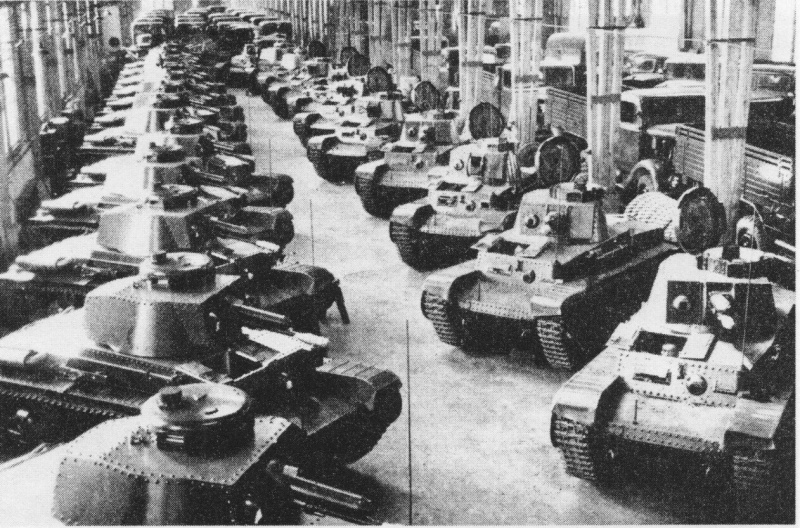
Škoda assembly line in 1938. The most prolific model of the Czech army was the LT vz.35.
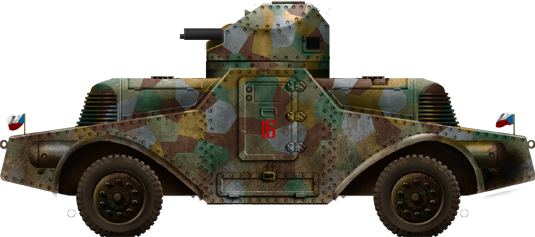
Škoda PA-I (1923) – After the FIAT-Škoda Torino of 1922, the Army decided it wanted a more modern and faster armored car. Škoda came with a revolutionary design at that time, the PA-I, first of a series of symmetrical, double-drive vehicles. It had a particularly aesthetic design, which lasted until the country was partly annexed by Germany. The PA-I was entirely purpose-built and was the first armored car ever fitted with a double drive system, allowing the same speed and maneuverability in reverse. Its armor was up to 5.5 mm (0.22 in) thick. It had a single turret armed with a pair of independent water cooled Mg.08 machine guns. Only two prototypes were built in 1923, which served for trials and as testbeds. They were 7.6 tons heavy, 6.6 x 2.26 x 2.74 m in size, and had a crew of 5. Their fate is unknown.
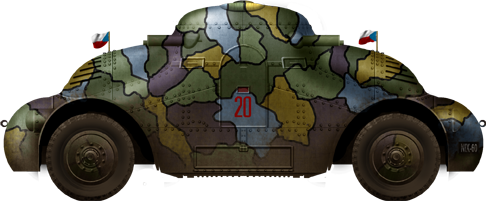
The Škoda PA-2 Želva, or “turtle”, was one of the most recognizable interwar armored cars. It pushed forward the concept of double drive, and married it to a wonderful bodywork, worthy of an art deco museum. However, these vehicles were costly and lacked agility.
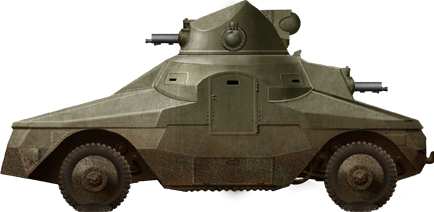
The next Škoda OA vz.27 (PA-III) in 1927 was an attempt to correct previous issues, and had a lighter hull and a central turret instead of machine-guns in sponsons. But it was still relatively costly and, moreover, too heavy. Anyway, the real game changer came in 1933 with the cheap, light and mass-produced Tatra Koprivnice T-72.
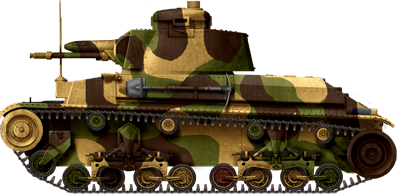
The LT vz.35 was built in quantity prior to 1938 for the Czech Army. It was the most common tank in service. After the German occupation, these light tanks were incorporated as the Panzer 35(t) and served at least until the beginning of Operation Barbarossa. By 1942, however, the Panzer 35(t) were hopelessly outdated and few in numbers.

The Swedish Strv 37/m. Derived from the export model CKD-AH IV. Exports helped funding Skoda research on new tanks, but were not always a good bargain, as customers were quite adamant and finicky about the customization of their model.
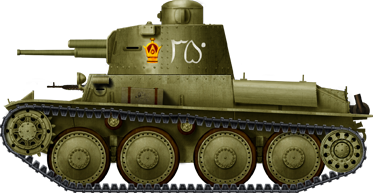
Iranian TNHP. The ancestor of the Panzer 38(t) was a stunning export success, stopped abruptly in 1938.
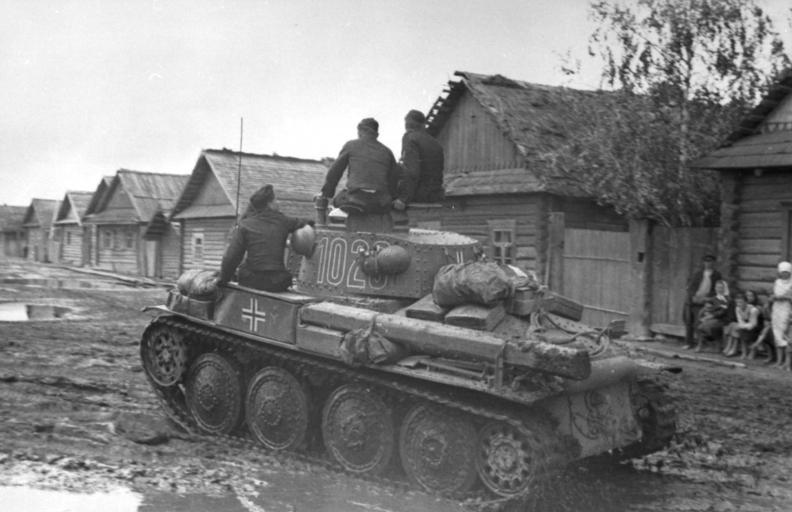
The Panzer 38(t) was a Czech-built good all-around light tank, well used by the Wehrmacht and declined into many versions. It was better armed than the Panzer II and proved more sturdy and reliable overall. It gave birth, among others, to one of the most effective tank hunters of the war, the Jagdpanzer 38(t).

WW2 Tanks




























WW2 tanks posters

All Tiger tanks liveries.

Panther liveries and variants

WW2 Armour - All tanks











Tanks aces and single tanks series

Find more there

Museums, Movies, Books & Games
The Tanks and Armor in pop culture
Tanks and armored vehicles in general are only really grasped when seen first person: The mass, the scale, it's all there. Explore also the way tanks were covered in the movie industry, in books and in video games.Movies:
Best tanks movie on warhistoryonline.com
On imdb.com
On bestsimilar.com/
miltours.com
liveabout.com/
watchmojo.com
Video Games:
pcgamesn.com
historyhit.com
levvvel.com
vg247.com/best-tank-games
mmobomb.com/
alienwarearena.com

